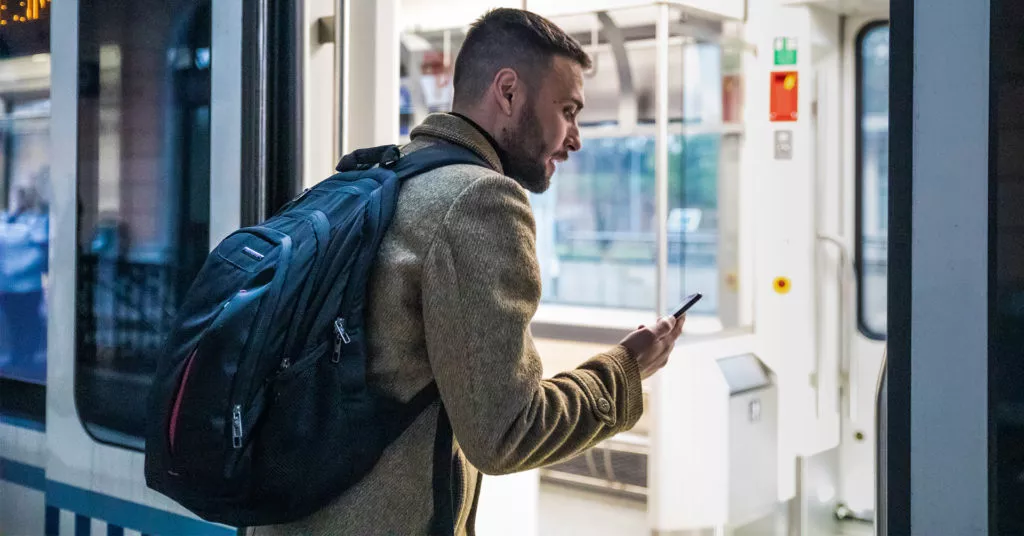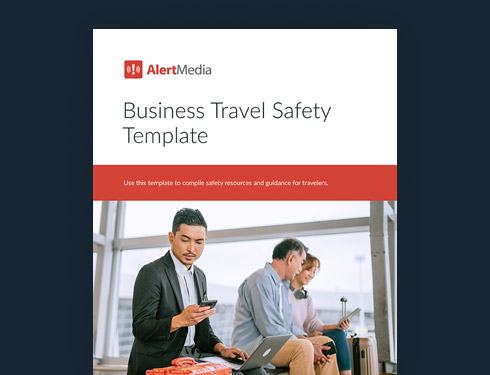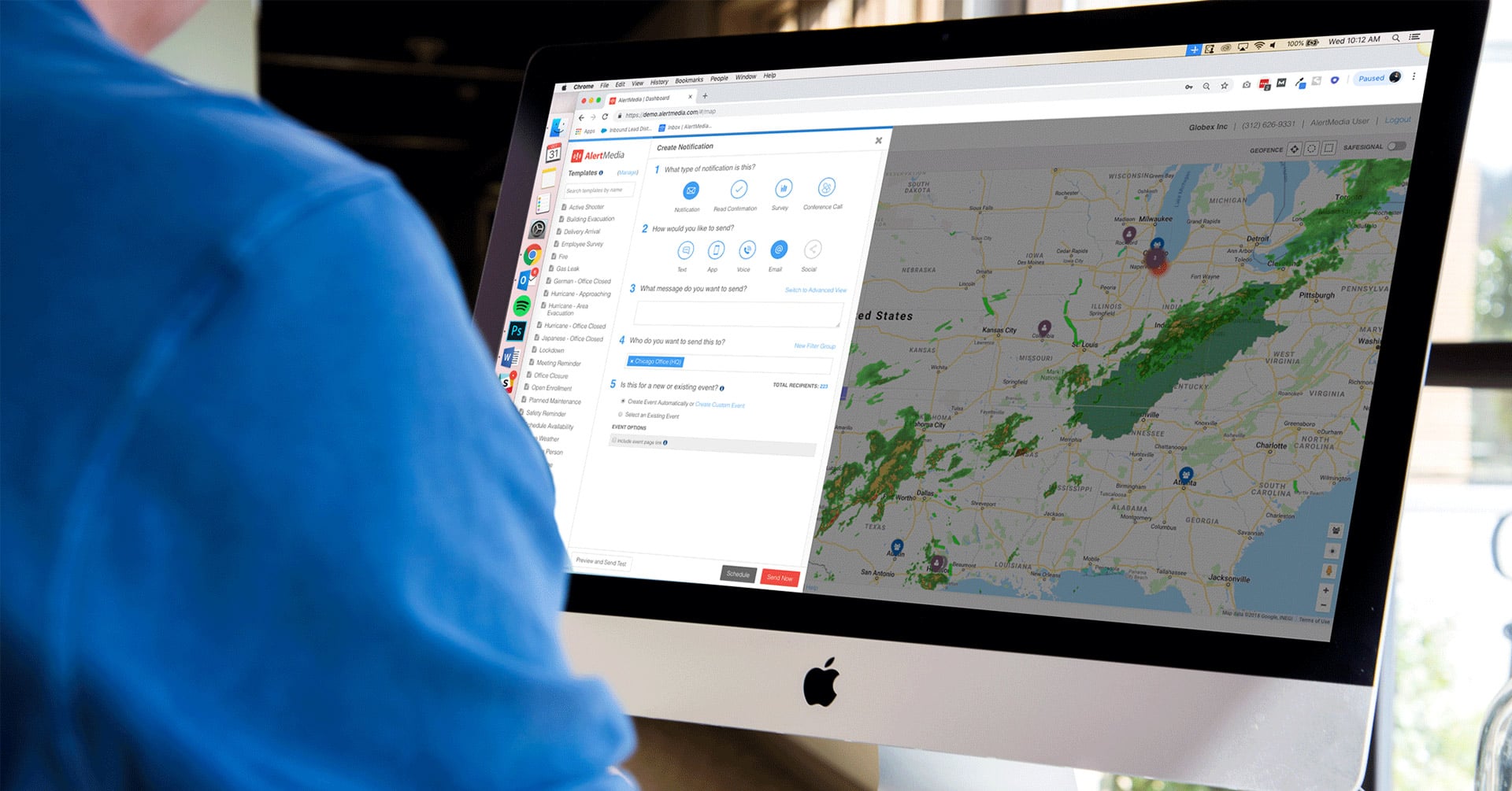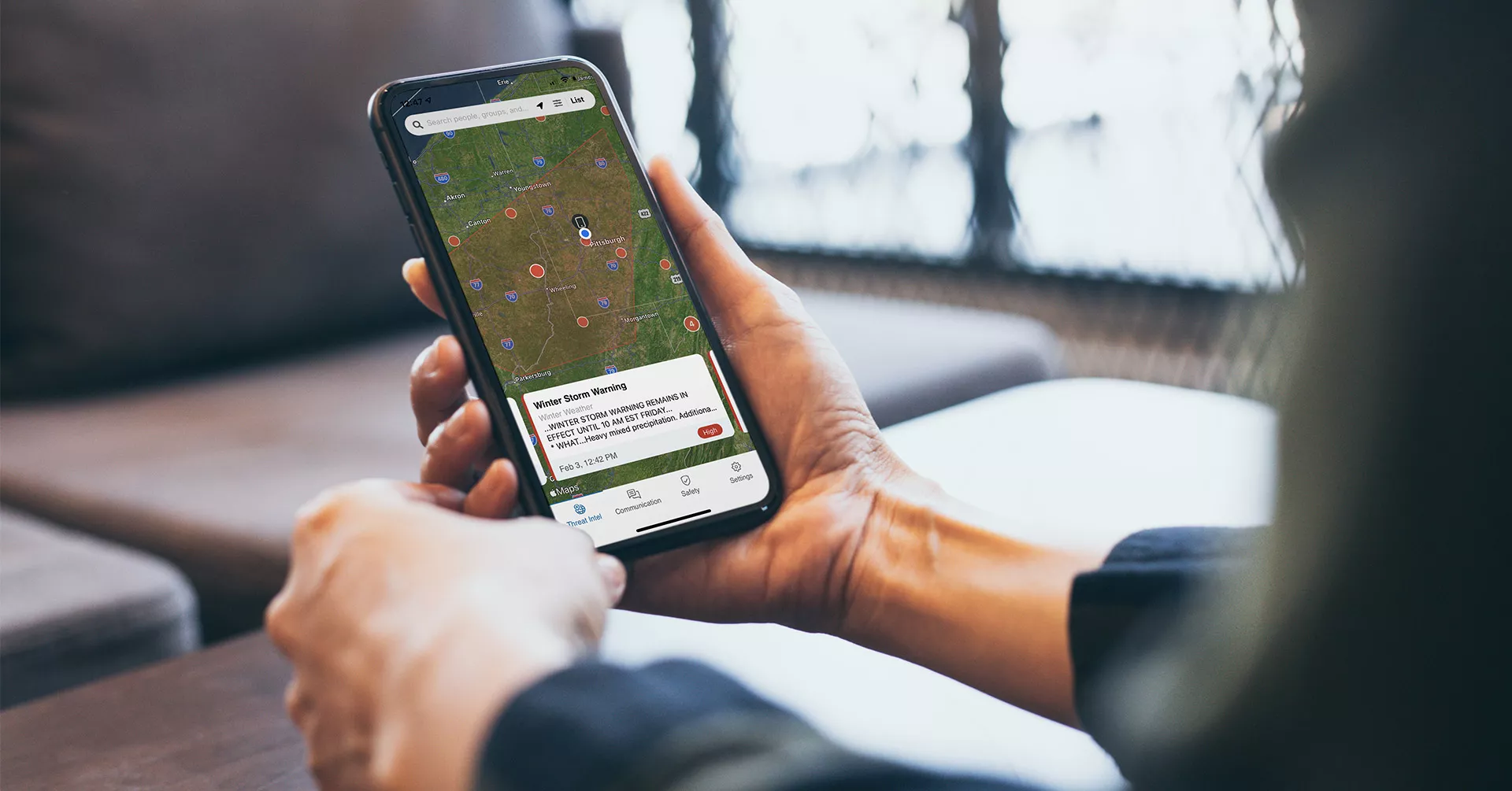
Meeting Your Duty of Care to Business Travelers: Guidelines and Tips
Traveling workers face unique and varied dangers worldwide. Here are the ways you can fulfill your duty of care and protect them.

In the spring of 2020, the COVID-19 pandemic took the world by storm. Businesses and essential services were closed or suspended, shelter-in-place orders went into effect, and millions became infected with a novel and poorly understood virus.
At that time, many business travelers found themselves stranded due to suddenly imposed travel restrictions that kept them from returning to their home countries. Companies were left scrambling to get them home or to support employees who were not able to return.
But with business travel now approaching pre-pandemic levels, travelers are contending with COVID on top of the other myriad threats they might face on their journeys. The complexity of international travel requires careful planning, monitoring, and communication to keep employees safe when working abroad and to meet your duty of care for all employees
Download Our Business Travel Safety Template
Why Business Travel Care Measures Are Critical

The COVID pandemic presented discomfiting truths about keeping traveling workers safe, but the extent of potential risks are wider and farther reaching. Circumstances including civil or political unrest, terrorism, health threats, criminal detention, and cyberattacks emerge unpredictably in places around the world. While it’s important for your employees to practice situational awareness and try to anticipate threats in their immediate surroundings, they can do only so much on their own and need support in order to stay safe.
When traveling, workers are already isolated from their usual support networks: their coworkers, supervisors, HR department, IT team, and others. Additionally, they are often unfamiliar with the local environment, resources, and threat landscape. Even more than at home and in their familiar workplaces, traveling employees need to depend on the support of safety leaders—so it’s critical that you build effective and reliable communication pathways, as well as travel safety and emergency response plans.
What Is Duty of Care?
Duty of care is an employer’s responsibility to safeguard against injury or other harm to employees while on the job or performing ancillary tasks like commuting or traveling. This term, duty of care, originally came to us from the legal world, where employee injury often means a regulatory audit and possible penalties. Duty of care as a proactive approach has become popular among business and safety leaders because it makes good legal sense and contributes to an organization’s safety culture. Beyond that, it’s the morally right way to run a business.
The United States Occupational Safety and Health Administration, or OSHA, has a similar requirement known as the General Duty Clause: “Each employer shall furnish to each of [its] employees employment and a place of employment which are free from recognized hazards that are causing or are likely to cause death or serious physical harm…”
In short, you have to protect the people working for you and those exposed to your work. It is the morally sound thing to do, and it’s one of the best ways to increase employee morale, loyalty, and peace of mind. According to our State of Employee Safety Report, 82% of workers believe it’s their employer’s job to protect them while on the clock, including when traveling for company business.
What Is Your Duty of Care in Travel Management?
You can satisfy your business travel duty of care by fulfilling a few primary responsibilities and preparing for certain eventualities.
Conduct a risk assessment
Before you can do anything to keep your distributed employees safe, you need to perform a threat assessment that narrows in on employee travel. This process will help you identify potential risks, both likely and unlikely, and predict their effects on your travelers. As part of your business threat assessment, quantify every threat in terms of its impact and likelihood. This analysis will inform your travel risk management plan.
Because each business trip is unique, risk assessments need to be unique as well. It might not be necessary to perform an individual risk assessment for each traveler. If one or more of your employees frequently make the same trip, like in the case of a foreign office in a safe, stable locale, you might need only one assessment to determine the necessary business travel care measures. In this case, employees might all take the same flight, stay at the same hotel, and follow the same schedule—making potential risks predictable. You will need to revise and update the assessment, but it might not need so much personalization for each traveler.
However, if you plan on sending employees to places your organization does not go to often or places recognized as high-risk, you’ll need to draft a new risk assessment. In any case, you’ll complete this careful assessment in advance of a trip. Once you’ve pinpointed all potential dangers, you can plan to prevent or react to each of them.

Make a plan
Now that you have a view of the threat landscape for an upcoming business trip, you can begin to develop your travel safety policy. This document dictates what the company and its traveling employees should do to account for the risks you identified in the previous step. This “care plan” will include ways to avoid threats entirely and plans to react if a hazard does unfold.
For high-impact threats, focus on preventative steps you can take. These threats include security risks: targeted violence, contracting dangerous diseases while abroad, massive cybersecurity breaches in key sectors like hospitality and air travel, and being detained by foreign police. You need to develop an emergency response plan in case one of these threats does impact your business. However, your focus should be on planning with the foresight to avoid them entirely.
For high-likelihood threats, you’ll likely take an alternative approach. When it comes to things like severe weather, delayed flights, and jet lag—with employee travel, these things often come with the territory. While there is little you can do to prevent these kinds of risks, the focus of your travel care program should be on preparing to mitigate harm or inconvenience.
Monitor emerging threats
No matter how carefully you craft your plan, your travel risk management program doesn’t stop there because unforeseen complications are to be expected. As in the case of the stranded COVID-lockdown travelers, some things happen without enough advanced warning to prepare effectively. There are, however, things you can do to keep track of these developments.
The fastest and most comprehensive way to stay ahead of all the developing threats around the world is to use a threat intelligence system. These advanced services pull information from thousands of sources—from local news to police to social media—and trained intelligence experts filter out everything but the most important alerts, so you can focus on keeping everyone safe and informed. When you have direct access to analysts, you can reach out for more details about the emerging threats impacting your traveling employees.

Another way technology can enhance your threat monitoring capabilities is with location data from your employees, used to pinpoint proximal threats. This feature can help improve your threat monitoring capabilities even for your non-traveling employees, but it’s especially useful when they are on the go. Since travelers move around frequently, having their location data integrated with your threat data, you’ll be more likely to spot events that might harm your people or affect their plans.
Stay in touch
Duty of care in business travel is also supported by simple communication between the traveler and HQ. When you notice a new threat, you need to make the traveler aware of it so they can take action to keep themself safe. By using a threat intelligence program that integrates with your mass notification system, you make it all the easier and faster, increasing the odds of a positive safety outcome.
Employees also need a way of responding to those alerts with information of their own or to raise the alarm of dangers that they’ve noticed themselves. Your mass notification system should be able to send messages in both directions, from company travel management and the travelers themselves. Not only does increased communication support your duty of care obligations, but it also serves to reinforce your safety culture and prove to your employees that you’re heavily invested in their safety and health. This improves morale, boosts productivity and retention, and generally makes your company a better place to work.
Common Travel Risks and Safety Strategies
The specific risks your traveling employees may face will vary widely depending on the kind of business you do, where you travel, and other factors. An energy company that sends employees to oil fields in remote parts of Saudi Arabia has to prepare for very different risks than the ones a software company must prepare for with sales reps traveling domestically.
Needless to say, it’s crucial that you create your own business travel plans and tailor them for your travelers, their tasks, and their destinations. We’ve gathered some examples to give you an idea of what these measures might look like.
Natural disasters
Disasters like earthquakes, hurricanes, tsunamis, wildfires, and landslides are incredibly powerful, destructive forces that wreak havoc around the world every year. However, they tend to occur semi-predictably. That’s not to say that, for example, earthquakes in California can be predicted down to the minute, but they are expected to happen with some regularity, so residents and buildings there are more likely to be prepared for such an event. The same should be true for travel.
Strategy: Your plans should anticipate likely natural disasters in the area your employees will visit and follow best practices to avoid their impacts or to minimize harm to your people.
Targeted violence
While it might sound far-fetched, murder is the second most common cause of injury death to American travelers behind road accidents. Targeted violence involving travelers is often random and unpredictable, but much like natural disasters, these incidents tend to happen more frequently in some places.
Strategy: When a traveling employee is potentially at risk of targeted violence, it is absolutely essential that your threat assessment and other preparatory research be thorough. By identifying high-risk areas, you can alter your travel plans to avoid them. If that is not possible, and if traveling is absolutely necessary, consider private close protection (AKA bodyguards) to guard your people.
Cyberattack
If you’ve ever tried to stream a movie while traveling, you know the headache of finding a speedy, open, secure internet connection in an unfamiliar place. Nobody is more aware of this vulnerable connectivity than cyber criminals.
The security of public wifi access points in airports, hotels, and restaurants can be a guessing game. There are, however, guidelines to help your people maintain a safe connection to their vital internet-based resources.
Strategy: First of all, loop in your IT department when making your travel plans. Since they’re familiar with the configuration of your company’s internal network and devices, they’ll be able to offer tailored advice. These tips can guide your efforts:
- Access sensitive information only on secured networks. WPA-2 is a popular and usually sufficient encryption protocol, whereas WEP should be avoided. But again, your IT team would know best in this case.
- Use a virtual private network (VPN) to secure traffic from interception.
- Keep everything, especially operating systems and antivirus, up-to-date.
- Diligently practice cybersecurity recommendations: keep passwords distinct and hard to guess, be wary of phishing scams, and disable unnecessary services like location data and Bluetooth.
Complete Care
When employees travel, your business extends to where they go. If you’re fulfilling your duty of care for the day-to-day workers in static locations, you’re already familiar with the considerations you need to make to keep them safe and healthy. Apply similar thinking to the challenges and needs of your employees on the go.
If you’re looking for ways to make the threat identification and communication side easier so you can focus on your people, let us know and we’ll show you how AlertMedia can help.




